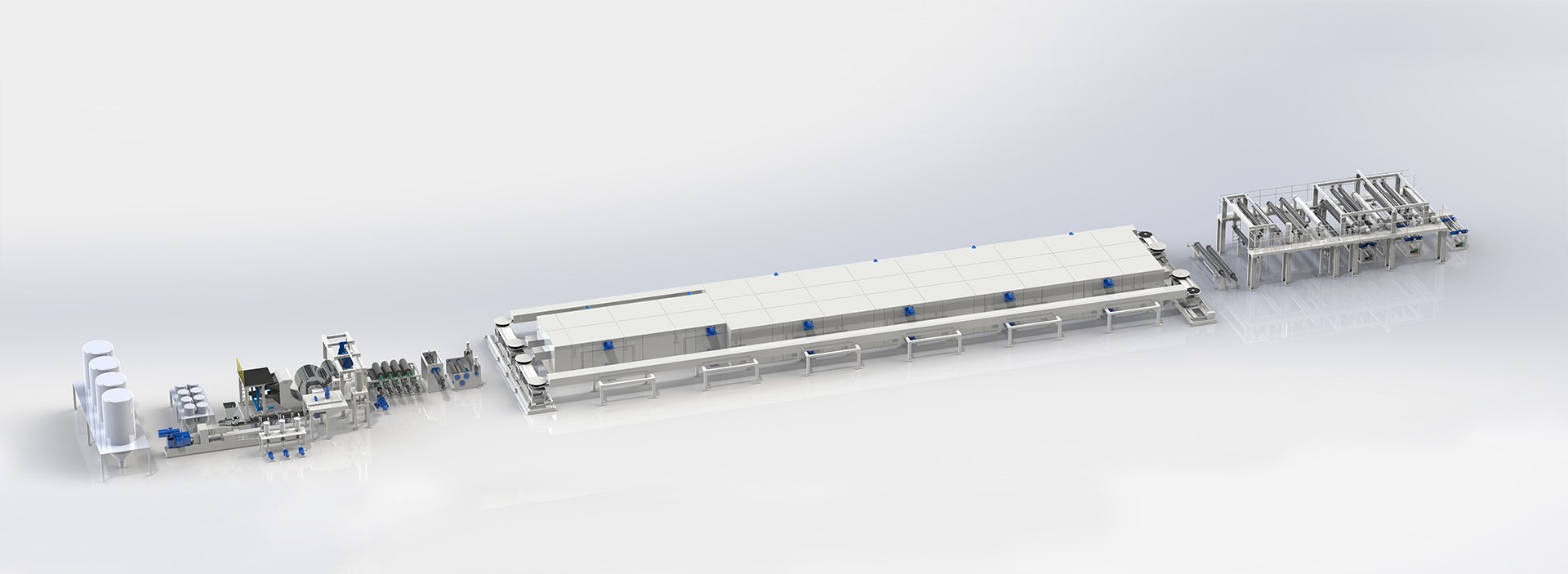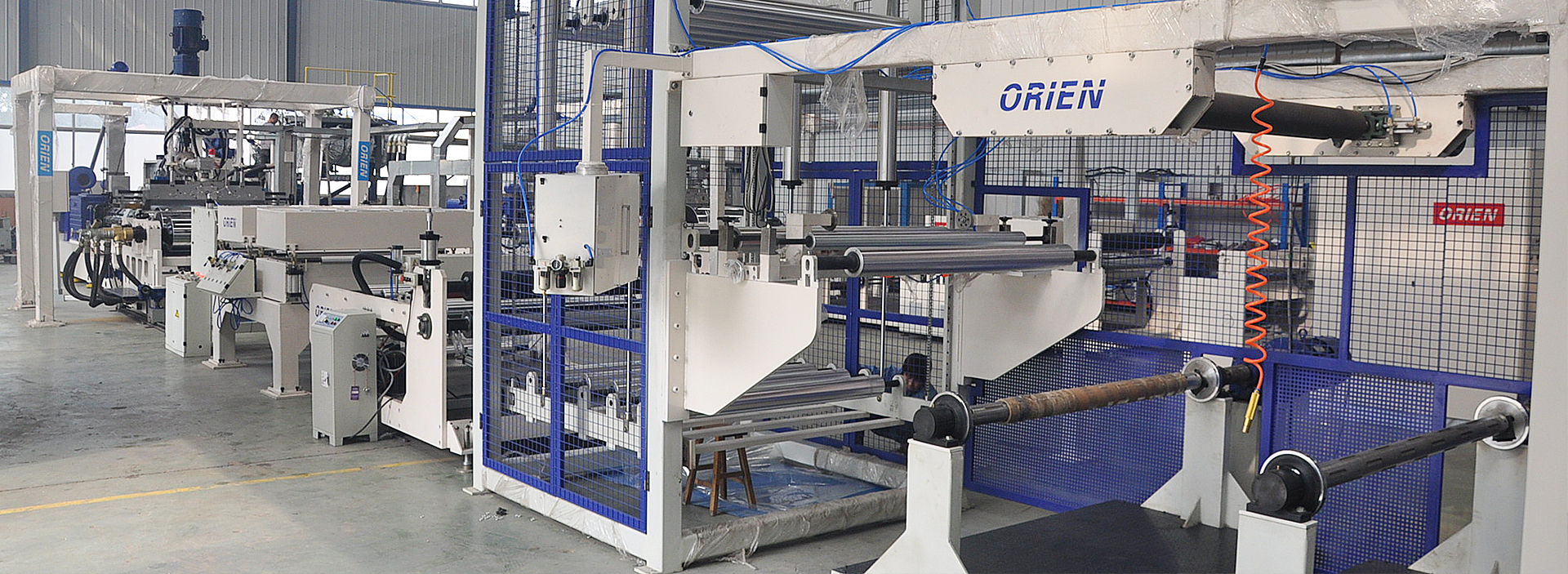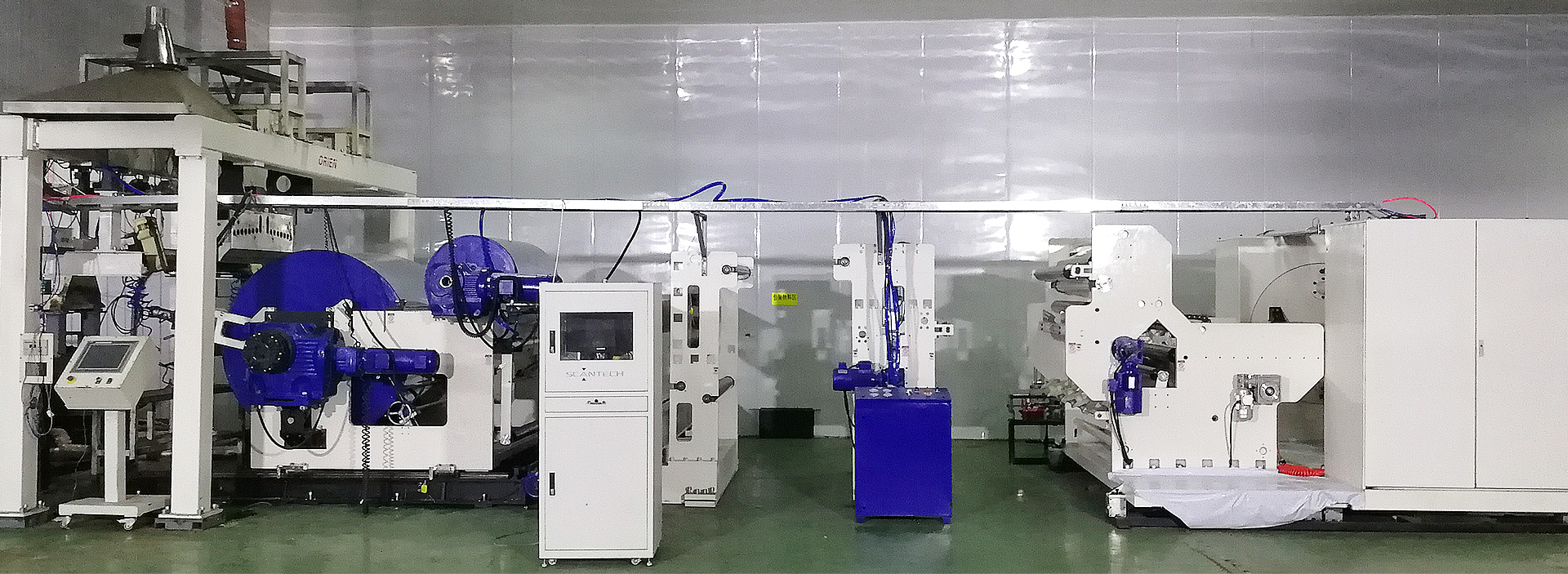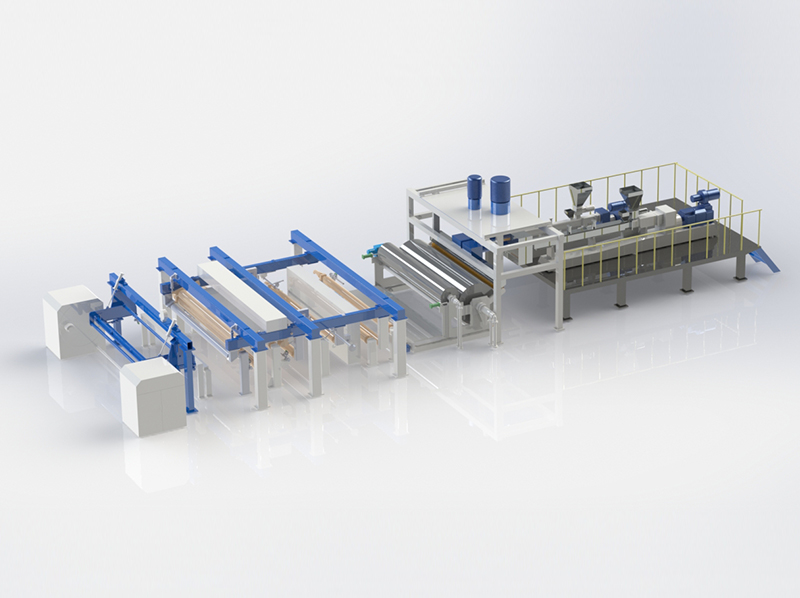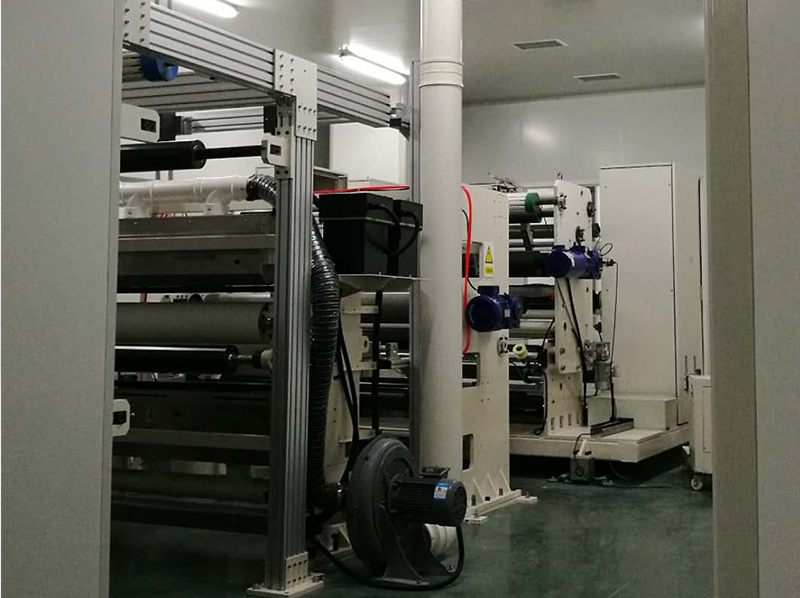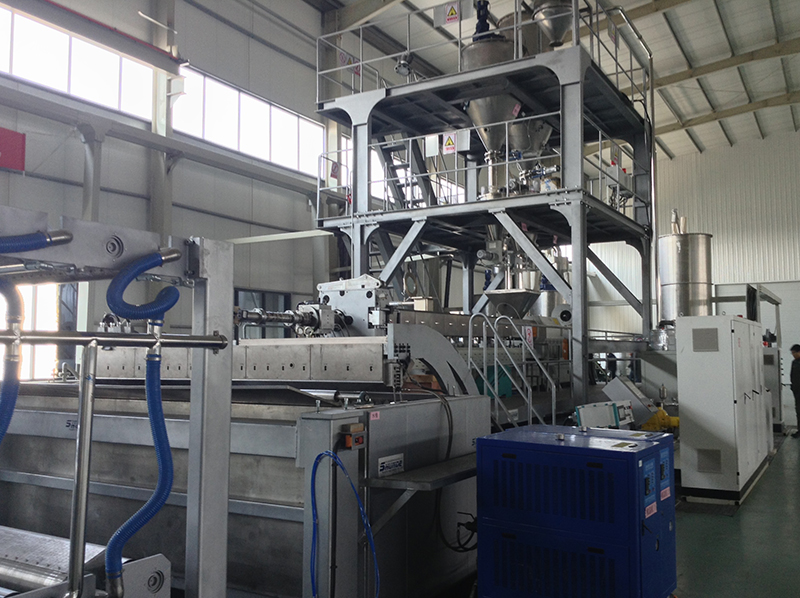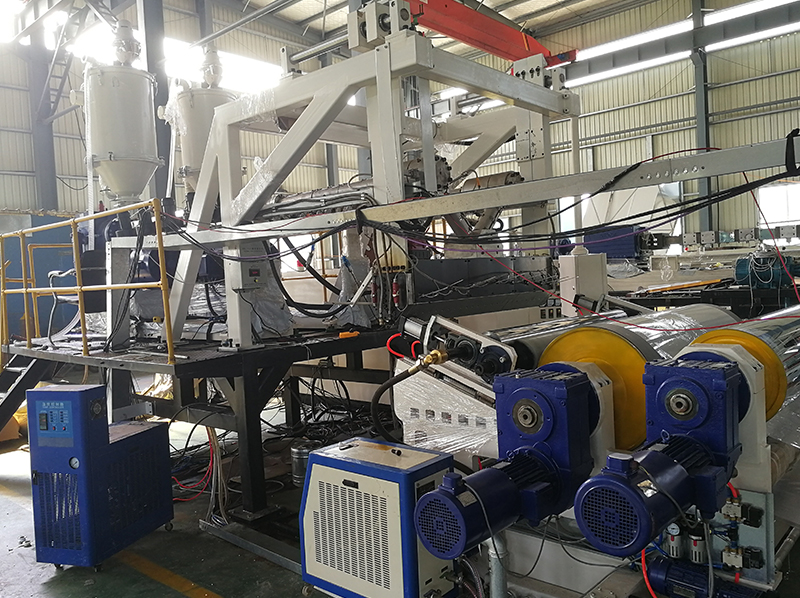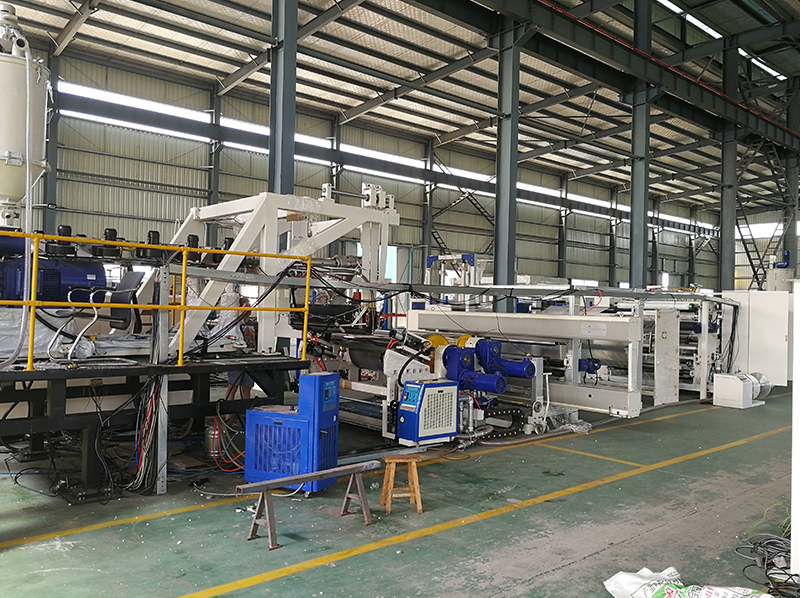Pvdf Cast film production line
Pvdf Cast film production line
The pvdf cast film production line is developed and designed by Qingdao Ou Rui Company, which fills many domestic technical gaps and is in the leading position in the industry.
1. The complete set of equipment adopts Siemens PLC, closed control, one-speed speed increase, easy to operate.
2, the special screw design of the extruder ensures that the plastic melts, the color is uniform, and the extrusion volume is high.
3, fully automatic mold with thickness gauge, can more effectively fine-tune the thickness deviation of the melt on the transverse width of the die, thickness uniformity to ensure ± 1 wire.
4. The casting roller adopts the internal machining method of the inner flow passage to ensure that the temperature control is plus or minus 1 degree, and the rolling surface control precision is plus or minus 1 wire to ensure the thickness of the cast film is more accurate.
5, using Italian Re tension sensor and control system to ensure that the tension control is positive and negative 1 cow.
6, a full set of servo motor, with the servo controller to make the equipment run more accurately.
7. The automatic cutting and winding machine has two functions of contact winding and gap winding. The winding has taper tension control, and the adjustment range is 5-200N/M.
The Qingdao Ou Rui pvdf cast film production line has been successfully put into production in major domestic manufacturers and has been widely recognized and highly evaluated.
The origin of PVDF cast film
In the first few years of the photovoltaic industry, the PV back sheet material has always been the mainstream of DuPont's Tedlar® PVF film (T film). The major terminals and component factories also recognized the T film at this time. And it is also applied on a large scale in actual products. Due to the capacity limitation of DuPont T film, the corresponding backsheet products can not meet the rapid expansion of the market demand, and the higher price of DuPont T film products prompted the industry to explore the search for a low-cost fluorine film instead of DuPont T film. A good window for the development of PVDF film was given. Around 2009, Arkema of France developed a three-layer structure of Kynar® PVDF film (K film for short) and registered trademark KPK®, which is priced lower than DuPont T film. The products and production capacity also expanded rapidly. The customers in the industry gradually accepted and began to adopt this K film product. However, due to the complicated process of the PVDF manufacturing process of the three-layer structure, the cost is still higher than the market expectation, so the single-layer PVDF film with simpler process needs Born, also referred to as K film, the cost is greatly reduced with the simplification of the process. Due to market expansion and low cost demand, several companies in Korea and Japan quickly joined the production of single-layer K film and occupied some market segments. Time came to 2014, some Chinese enterprises have noticed that business opportunities have also joined the ranks of single-layer K film production, and they have won the favor of the market at a lower price. By the end of 2016, the overall market share of K-film composite backsheets is close to 50%. The low price K film has become one of the important backsheet composites.
Formulation and process of PVDF cast film
PVDF is the second largest fluoroplastic used at present. PVDF particles are difficult to form on their own. If PVDF particles are to be made into thin film, about 30% polymethyl methacrylate (PMMA, commonly known as acrylic) should be added as a plasticizer. In order to improve the film formability, PVDF after the addition of PMMA is more easily formed into a film in a molten state. Regarding the film forming process of PVDF film, the two processes of blown film and casting are mainly used in the market, but the casting method pvdf film has advantages in parameters such as transmittance and thickness uniformity, and the pvdf cast film production line has become The mainstream development direction at this stage.
The decorative pvdf production line is the requirement of the two extruders to achieve the performance of the pvdf film through the in-membrane composite process. According to the equipment used and the shape of the processed product, the temperature is controlled between 210 and 220 degrees Celsius, and the pvdf is cast. In the film production line, the molding temperature is controlled between 180 and 240 degrees Celsius. The temperature must be strictly controlled so that the temperature does not exceed its melting temperature for a long time. A single screw extruder can be used for the extrusion molding equipment.

